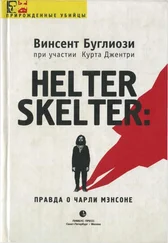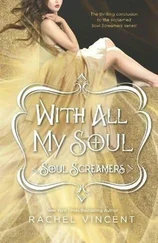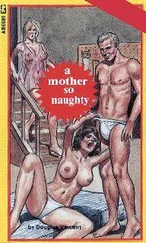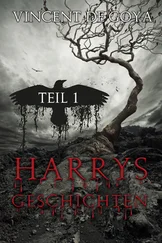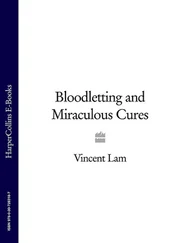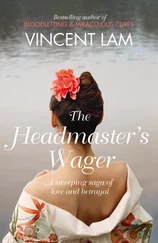The penalty trial is, in most cases, very short.
After conferring with counsel, Judge Older decided that if there was a penalty phase, it would commence in three days. Older also said he had decided to seal the courtroom until after the verdicts were read and all the jurors polled. Once the jurors and the defendants had been removed, the press would be allowed out, and then the spectators.
The three girls were brought in first. Though they had usually worn fairly colorful clothing during the trial, apparently there hadn’t been time for them to change, as all were wearing drab jail dresses. They seemed in good spirits, however, and were giggling and whispering. On being brought in, Manson winked at them and they winked back. Charlie was wearing a white shirt and blue scarf, and sporting a new, neatly trimmed goatee. Another face, for judgment day.
Single file, the jurors entered the jury box, taking their assigned seats, just as they had hundreds of times before. Only this time was different, and the spectators searched the twelve faces for clues. Perhaps the most common of all courtroom myths is that a jury won’t look at the accused if they have reached a guilty verdict. This is rarely true. None held Manson’s gaze when he stared at them, but then neither did they quickly look away. All you could really read in their faces was a tired tenseness.
THE COURT“All jurors and alternates are present. All counsel but Mr. Hughes are present. The defendants are present. Mr. Tubick, has the jury reached a verdict?”
TUBICK“Yes, Your Honor, we have.”
THE COURT“Will you hand the verdict forms to the bailiff.”
Foreman Tubick handed them to Bill Murray, who in turn gave them to Judge Older. As he scanned them, saying nothing, Sadie, Leslie, and Katie fell silent and Manson nervously fingered his goatee.
THE COURT“The clerk will read the verdicts.”
CLERK“In the Superior Court of the State of California, in and for the County of Los Angeles, the People of the State of California vs. Charles Manson, Patricia Krenwinkel, Susan Atkins, and Leslie Van Houten, Case No. A–253,156. Department 104.”
Darrow paused before reading the first of the twenty-seven separate verdicts. It seemed minutes but was probably only seconds. Everyone sat as if frozen, waiting.
“We, the jury in the above-entitled action, find the defendant, Charles Manson, guilty of the crime of murder of Abigail Folger in violation of Section 187, Penal Code of California, a felony, as charged in Count I of the Indictment, and we further find it to be murder of the first degree.”
Glancing at Manson, I noticed that, though his face was impassive, his hands were shaking. The girls displayed no emotion whatsoever.
The jury had deliberated for forty-two hours and forty minutes, over a nine-day period, a remarkably short time for such a long and complicated trial. The reading of the verdicts took thirty-eight minutes.
The People had obtained the verdicts they had requested against Charles Manson, Patricia Krenwinkel, and Susan Atkins: each had been found guilty of one count of conspiracy to commit murder and seven counts of murder in the first degree.
The People had also obtained the verdicts requested against Leslie Van Houten: she had been found guilty of one count of conspiracy to commit murder and two counts of murder in the first degree.
I later learned that although McBride had suggested the possibility of a lesser finding against Leslie Van Houten, when it came time to vote there was only one ballot and it was unanimous.
While the individual jurors were being polled, Leslie turned to Katie and said, “Look at the jury; don’t they look sad?” She was right, they did. Obviously it had been a very rough ordeal.
As the jury was being taken out, Manson suddenly yelled at Older: “We are still not allowed to put on a defense? You won’t outlive that, old man!”
Kanarek seemed strangely unmoved by the verdict. Though Fitzgerald told the press, “We expected the worst from the start,” he appeared thoroughly shaken. Outside court, he told reporters, “We felt we lost the case when we lost our change of venue motion. We had a hostile and antagonistic jury. The defendants had the same chance Sam Sheppard had in Cleveland—none.” Fitzgerald further stated that had the trial been held anywhere but in Los Angeles, he was sure they would have won acquittals for all the defendants.
“I don’t believe that for one minute,” I told the press. “It is just weeping on the part of the defense. The jury was not only fair, they based their verdict solely and exclusively on the evidence that came from that witness stand.”
“Yes,” I responded to the most frequently asked question, “we will seek the death penalty against all four defendants.”
The Manson girls on the corner outside the Hall of Justice first heard the news over the radio. They too were strangely calm. Though Brenda told newsmen, “There’s a revolution coming, very soon,” and Sandy said, “You are next, all of you,” these were Manson’s words, delivered in court months before, which they had been mouthing ever since. There were no tears, no outward display of emotion. It was as if they really didn’t care. Yet I knew this wasn’t true.
Watching the interview later on TV, I surmised that perhaps they had conditioned themselves to expect the worst.
In retrospect, another possibility emerges. Once the lowest of the low in the Manson hierarchy, good only for sex, procreation, and serving men, the girls had now become his chief apostles, the keepers of the faith. Now Charlie was dependent on them. It appears quite likely that they were undisturbed by the verdict because they were already formulating a plan which, if all went well, could set not only Manson but all the other Family members free.
PART 8
Fires in Your Cities
“Mr. and Mrs. America—you are wrong. I am not the King of the Jews nor am I a hippie cult leader. I am what you have made of me and the mad dog devil killer fiend leper is a reflection of your society…Whatever the outcome of this madness that you call a fair trial or Christian justice, you can know this: In my mind’s eye my thoughts light fires in your cities.”
STATEMENT ISSUED BY CHARLES MANSON after his conviction for the Tate-LaBianca murders
JANUARY 26–MARCH 17, 1971
During the penalty trial the sole issue for the jury to decide was whether the defendants should receive life imprisonment or the death penalty. Considerations like mitigating circumstances, background, remorse, and the possibility of rehabilitation were therefore now relevant.
To avoid prolonging the trial and risk alienating the jury, I called only two witnesses: officer Thomas Drynan and Bernard “Lotsapoppa” Crowe.
Drynan testified that when he arrested Susan Atkins outside Stayton, Oregon, in 1966, she was carrying a .25 caliber pistol. “I asked Miss Atkins what she intended to do with the gun,” Drynan recalled, “and she told me that if she had the opportunity she would have shot and killed me.”
Drynan’s testimony proved that even before Susan Atkins met Charles Manson she had murder in her heart.
On cross-examination Shinn asked Drynan about the .25 caliber pistol.
Q.“The size is very small—it looks like a toy gun—is that correct?”
A.“Well, not to me.”
Crowe described how, on the night of July 1, 1969, Manson had shot him in the stomach and left him for dead. The importance of Crowe’s testimony was that it proved that Manson was quite capable of committing murder on his own.
Читать дальше

